how to Read trombone Music
Your one-stop self-help guide to reading trombone sheet music
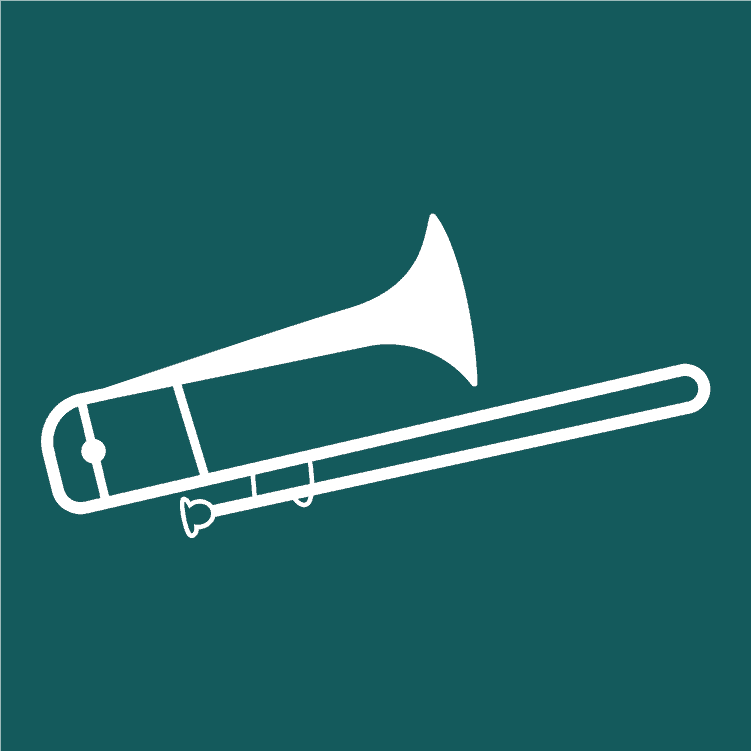
Determining how to read music is a really important skill to have. But it’s also a totally different skill from actually playing the trombone. Exactly why should we treat them as one and the same! As a section inside our ‘Beginner’s Guide To Learning The Trombone’, we hope to give you the know-how and information to read music better.
So why do we need written down music?
Music is actually a language; and similar to any language, it has a written variety. Notation gives musicians worldwide a tool to communicate. A composer writes their piece with distinct symbols, and provided you can read music, you can understand it, decipher it, and ultimately play it.
Examples of very early notation have been discovered on tablets going back as far as 2000 BC. Modern’ staff notation’, the technique we currently use, was made by Catholic monks to standardise church music.

Why Bother Finding Out How To Read Music?
Let’s be totally honest. Learning to read music is actually a hard thing to do.
If you’re wanting to play pop, it’s not crucial that you learn to read music. On the other hand, if you do, you’ll find life faster and easier down the road.
You may absolutely go down this path if you choose. Just be aware that like riding a bike, reading music is a skill you never forget – and the positives massively outweigh the cons.
When You Learnt To Read And Write...
Whenever you were understanding how to read and write, did your educator handle them as the same task? Most likely not. Physically writing letters and understanding how to control a pencil, is really a different skill set than reading how particular characters join together to make a word.
Reading music, and the process of learning to achieve it is the same.
The process of playing the trombone is a completely different skill from the process of reading the music that is placed before you. Yes, you will discover an interconnection. But it’s not the same. So any educator who is not breaking up out these tasks, and teaching them through different techniques, should be fired!
Learn How To Read Music Notation For The Trombone
The Bass Clef Staff
For trombone, staff notation is organized around something known as the bass staff. This contains a stave (the term for the lines) of 5 lines and 4 spaces. It is usually labelled using a bass clef (the thing at the start of the line that looks like a backwards C)!
Middle C lies in the gap at the very top of the stave, upon an imaginary line.
Notes can sit on a line or in a space. The vertical placement (height) of the note specifies the pitch. The higher up the stave, the higher the pitch. In the event the note would need to move higher or below the stave lines, we create mini lines for any note that is higher or lower. These lines are referred to as ledger lines.
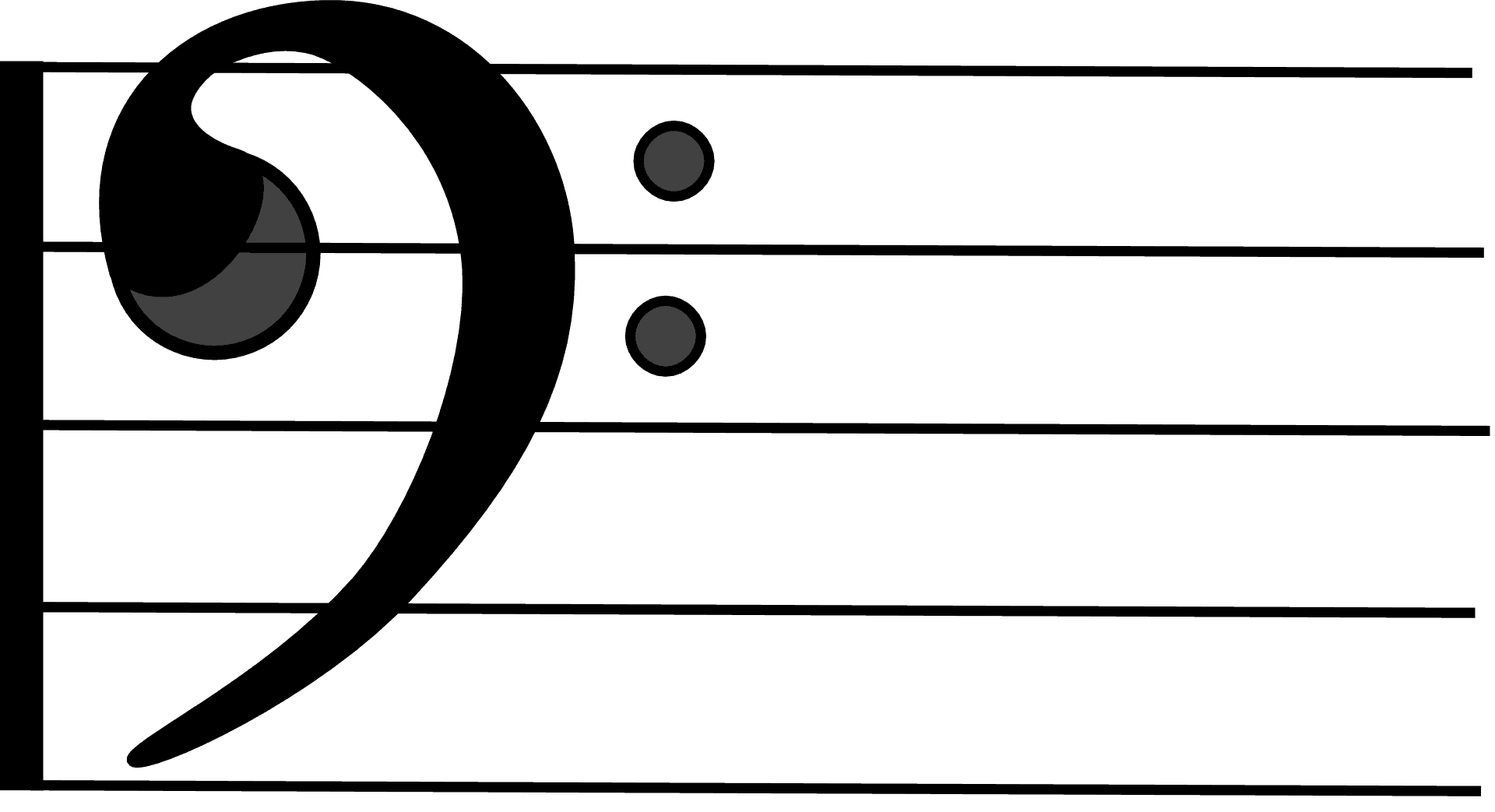
The notes
To avoid counting down from middle C every time, we can easily use memory aids to recognise the notes. The 4 spaces of the bass staff read the phrase “All Cows Eat Grass”.
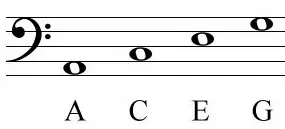
The five lines of the bass staff are GBDFA. The acronyms that are well-known are usually “Good Boys Do Fine Always” or “Great Big Dragons Fly Around.” We personally feel they are pretty terrible, and it’s much more fun to make up your own!
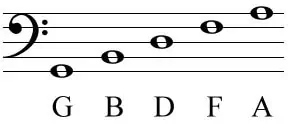
And simply for completeness, here is the whole Bass Clef Staff, with all notes…

Value of Notes
When reading music, all of us read from left to right. And now we understand what placement on the stave creates a what note, we must have another instruction from the printed symbol. We need to understand how long to hold the note for.
The overall shape of the note and if it’s filled in, informs us how much time to hold the note for.
- A whole note (or if you are in the UK, it’s called a Semibreve) is an empty circle and lasts four counts.
- A half note (or if you are in the UK, it’s called a Minim) adds a stem and lasts two counts.
- A quarter note (or if you are in the UK, it’s called a Crotchet) fills in the circle and lasts one count.
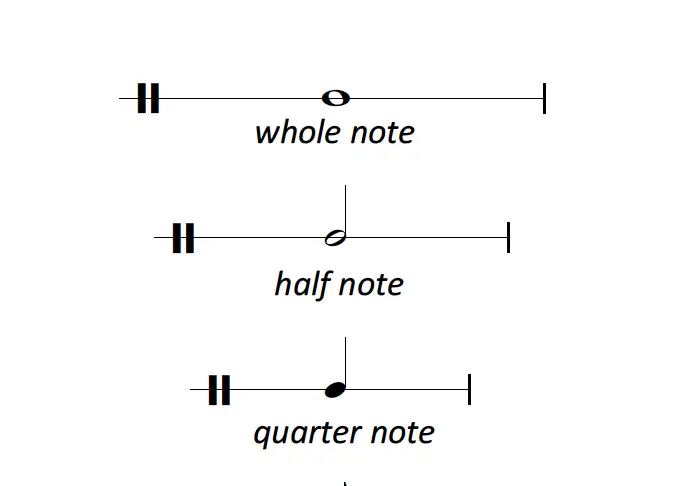

How To Read Trombone Sheet Music - Summary
Excellent news – you’re on your way to reading music!
With this simple information, now you can go away and use what you’ve discovered. It’s really not as difficult as you believed – and you’ll soon get the hang of it with a little bit of persistence.
It won’t surprise you to know that there is quite a bit more about reading music than I’ve mentioned above. But all of us have to begin somewhere – and provided you can reach the point in which you remember all of this info and find it easier, you’ll then be ready to plunge in more deeply with your pursuit of understanding!
About the Author
Matthew Gee
After starting his career in the opera pits of Scotland, Chile and Yorkshire, Matthew took up positions with the Royal Philharmonic and Aurora Orchestra almost simultaneously. A love for contemporary music and chamber ensemble playing grew, largely through his work with Aurora, which now makes for an interesting portfolio career alongside teaching at the Royal Academy of Music and working with the brass septet Septura. Having said all that, he would swap it in an instance to play cricket for England.
Other posts by this author
Have You Registered Yet?
As regular as I listen to my favourite music, I send out an email to you with the four most excellent things that you absolutely have to know about.
Providing it has something connected with music, it can wind up in the e-mail. Consider it as a music pandora’s box!
Get access by pressing the button below.
Read the next post in this series:




